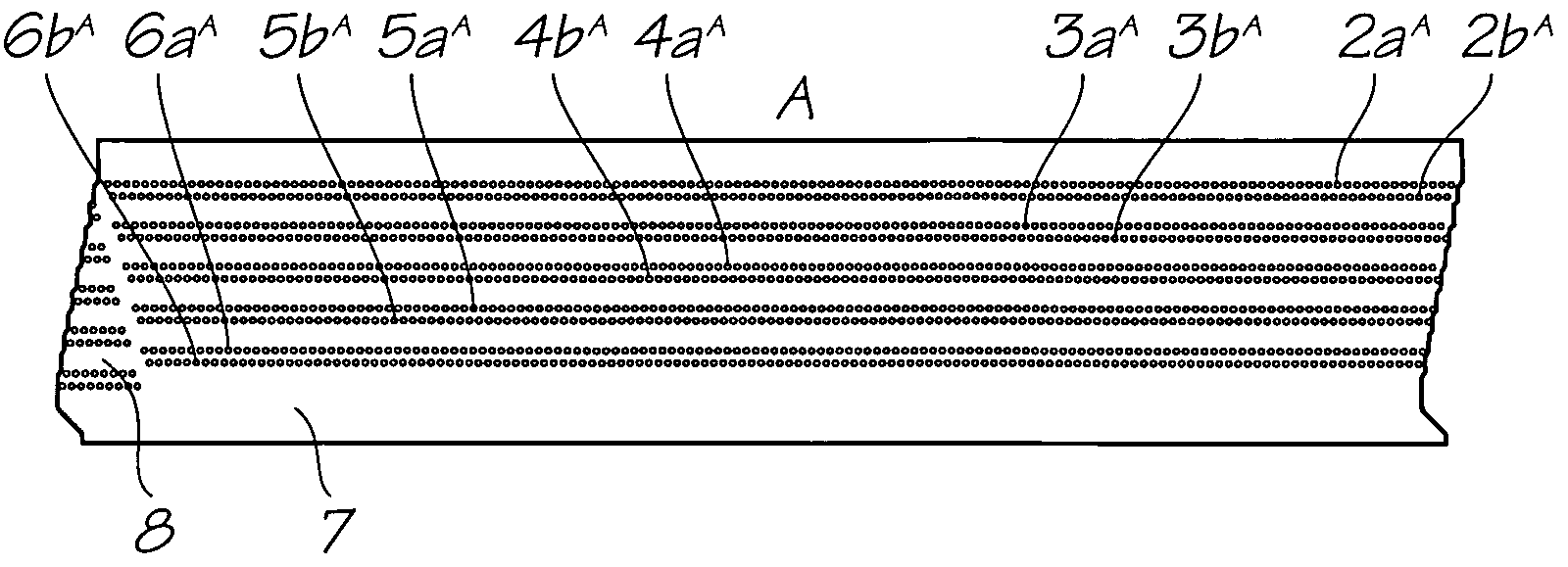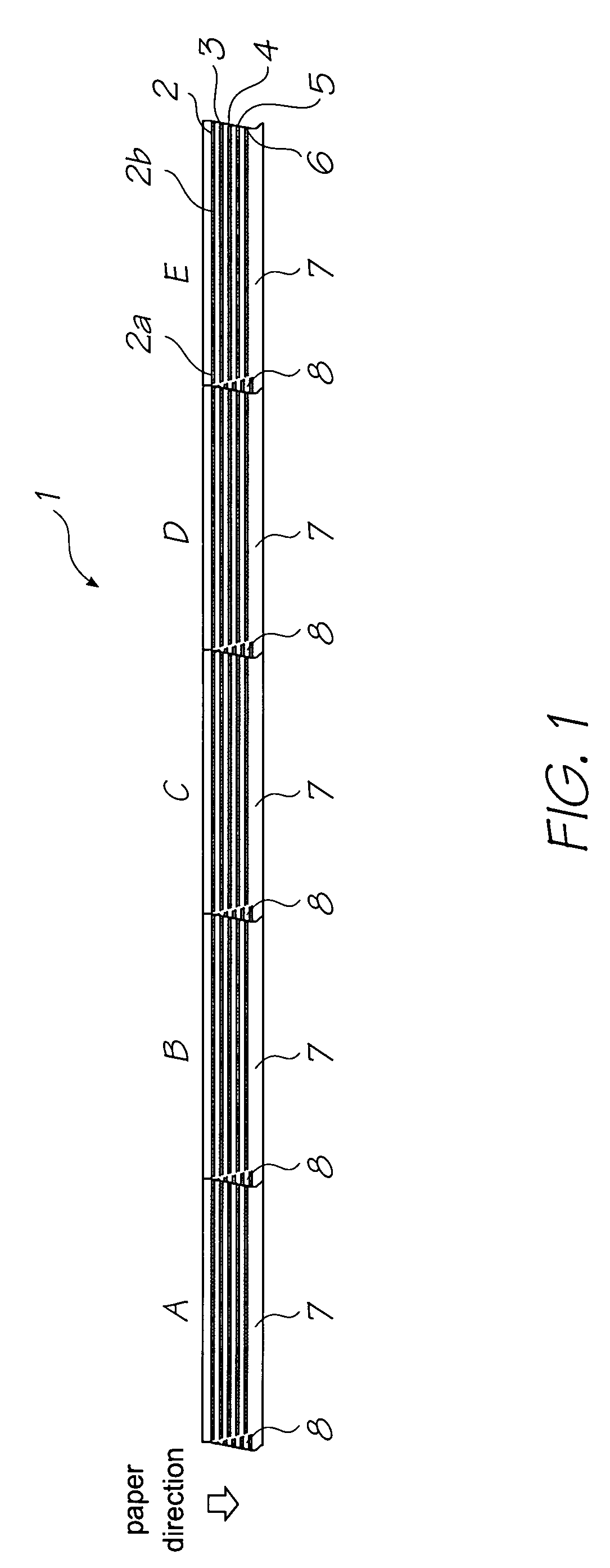Printer controller for modulating printhead peak power requirement using redundant nozzles
a printhead and power requirement technology, applied in the field of printing, can solve the problems of inability to meet the needs of current demands, inability to control the power requirement of the printhead during printing of the page, and inability to meet the needs of printing, etc., to achieve the effect of reducing the degree of peak power fluctuations within each line-time, reducing the cost of power supply and reducing the cost of production
- Summary
- Abstract
- Description
- Claims
- Application Information
AI Technical Summary
Benefits of technology
Problems solved by technology
Method used
Image
Examples
Embodiment Construction
[0077]The invention will be described with reference to a CMY pagewidth inkjet printhead 1, as shown in FIG. 1. The printhead 1 has five color channels 2, 3, 4, 5 and 6, which are C1, C2, M1, M2 and Y respectively. In other words cyan and magenta have ‘redundant’ color channels. The reason for making C and M redundant is that Y only contributes 11% of luminance, while C contributes 30% and M contributes 59%. Since the human eye is least sensitive to yellow, it is more visually acceptable to have missing yellow dots than missing cyan or magenta dots. In this printhead, black (K) printing is achieved via process-black (CMY).
[0078]The printhead 1 is comprised of five abutting printhead modules 7, which are referred to from left to right as A, B, C, D and E. The five modules 7 cooperate to form the printhead 1, which extends across the width of a page (not shown) to be printed. In this example, each module 7 has a length of about 20 mm so that the five abutting modules form a 4″ printhe...
PUM
 Login to View More
Login to View More Abstract
Description
Claims
Application Information
 Login to View More
Login to View More - R&D
- Intellectual Property
- Life Sciences
- Materials
- Tech Scout
- Unparalleled Data Quality
- Higher Quality Content
- 60% Fewer Hallucinations
Browse by: Latest US Patents, China's latest patents, Technical Efficacy Thesaurus, Application Domain, Technology Topic, Popular Technical Reports.
© 2025 PatSnap. All rights reserved.Legal|Privacy policy|Modern Slavery Act Transparency Statement|Sitemap|About US| Contact US: help@patsnap.com



